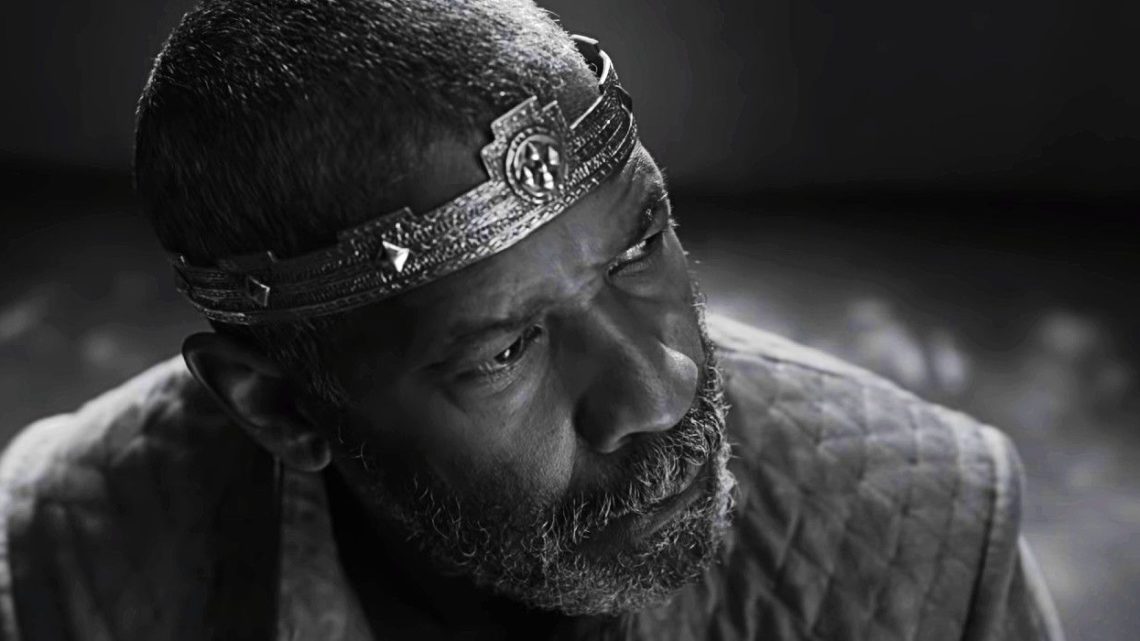Tropic Sprockets / The Tragedy of Macbeth
By Ian Brockway
All of us know some version of Macbeth. It is among the most famous of Shakespeare’s works and, other than Hamlet, probably the most existential. Who can forget a man pushed to the brink by his possessed and furious wife? Lady Macbeth is the ultimate villain in literature. A new startling adaptation entitled “The Tragedy of Macbeth” has been produced by A24, directed by Joel Coen. Though a shade minimalist and sparse, the film boasts vivid performances and striking flair. The story is well-familiar with a bible-like influence, but the design is what holds you in, making the iconic play a gothic delight.
Macbeth (Denzel Washington) is under a spell perhaps orchestrated by his psychotic queen (Frances McDormand) or perhaps by the three witches who make very monstrous human-raven hybrids. Whatever the case, King Macbeth is under a black-blooded, skin-flaying fugue and no one is safe. He is either driven apoplectic by gore and lesser rivals or he is flabby, saturnine and morose, dark eyes bored into his blank head like Jack in Stanley Kubrick’s “The Shining.”
What compels most potently is the film’s visual design which puts Macbeth, isolated and alone within empty arches and endless shadowy halls like De Chirico. Shadows make pentagrams of guilt, cruciforms of judgement over his head and feet, an amoral Jesus. He has only one way to go and it is into the arms of his crazed, impulsive wife. The king walks like a zombie, spacey and overwhelmed. Fate waits to devour him.
McDormand is excellent as the killer in charge, her face puffy and bloated, her eyes screwed in her head.
All of the characters seem eerily to be talking to themselves, overcome by a supernatural force or a murderous virus propelled by the wind. All is pre-ordained in stark black and white.
The witches themselves are frightening. Their human limbs making Alexander Calder mobiles of bone, crazy, mournful circus machines that foretell the apocalypse.
At times the black and white setting seems to be created from the same dreary mood of Robert Eggers’ “The Witch.” Here are the same black contorted landscapes and heavy gray grounds, but the long gray halls and silent arches make for a Yves Tanguy trial. If the well-travelled story does not grab you by the throat, the visual design will—one part The Fall of the House of Usher and one part De Chirico—all fusing together to make a strange and swift surrealist parade. Combined with strange raven-human hybrids that move with the oddness of dreams, this version is not only faithful to Shakespeare, but also makes a fine disquieting and oddly Pop Art nod to All Hallow’s Eve.
[livemarket market_name="KONK Life LiveMarket" limit=3 category=“” show_signup=0 show_more=0]





No Comment